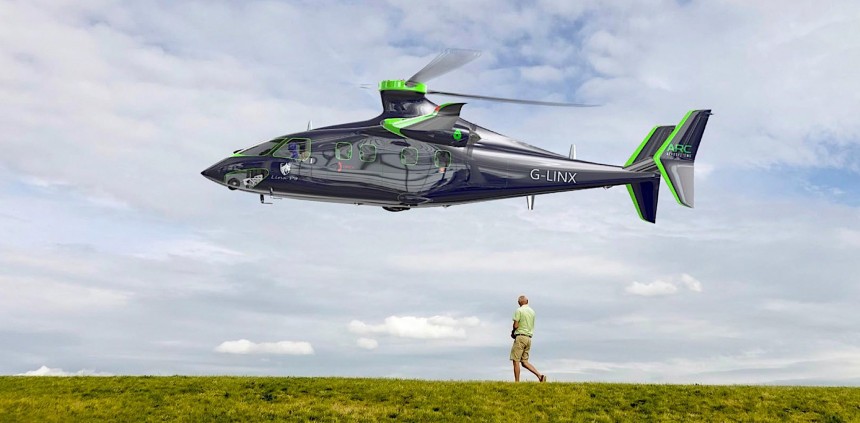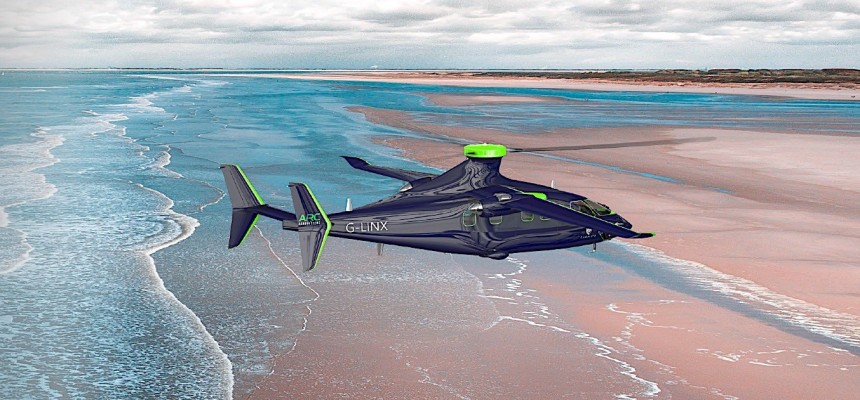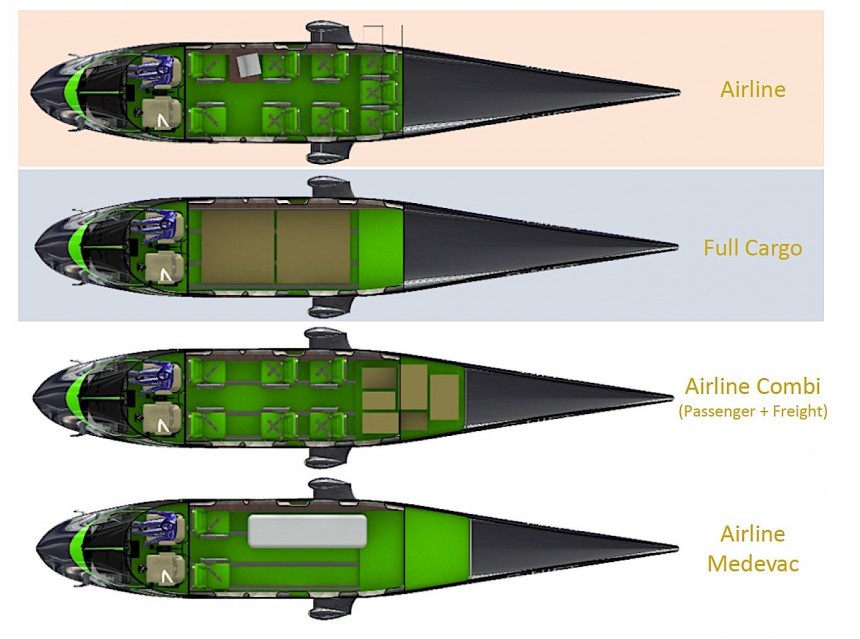Ever since the Sikorsky R-4 took to the air as humanity’s first full-scale production helicopter back in 1942, the skies of our world have been dominated by rotor aircraft. Their rise was backed by the ability to reach places that are impossible to reach by airplanes or any other means, by the capability of lifting great loads with great ease, and by their native reliability.
Yet, the helicopter’s domination of several segments of the aviation industry is about to end. Vertical take-off and landing (VTOL) vehicles are on their way, promising to put an end to the helicopter’s grip on the world.
Sure, VTOLs could easily be considered offshoots and even offsprings of traditional helicopters. But that doesn’t sweeten the deal in the slightest for the companies who now see their position threatened by all sorts of startups popping up all over the place and convincing people with their wacky ideas.
For some companies in the business of making helicopters for various uses, news of the Linx P9 targeting a slice of the shuttle and air-taxi segments is even more bitter. Especially because not only is this thing a VTOL, but one that’s shaped like a helicopter too.
The Linx P9 is made by a UK-based startup called ARC Aerosystems. The group first came into the spotlight back in 2018, when it presented the S1D e-Starling, a scaled remotely piloted flying aircraft. They kept at it rolling out prototypes, and last year they showed the ARC C-150, a fixed-wing VTOL UAV.
None of the projects the company worked on these past few years has turned into a real-world product, but when did you ever hear of a start-up being intimidated by such things? ARC isn’t either, and this is how the Linx P9 came to light.
We’re talking about a single-rotor aircraft that’s more or less of a weird combination between a helicopter, a VTOL, and an airplane. Let’s see how.
We’ll start with the cabin, described as perfect for air taxi and cargo duties. It has a width of 1.5 meters (5.1 feet) and a length of 3.5 meters (11.5 feet), which amounts to an interior volume of 7.6 cubic meters (268 cubic feet).
I know, the numbers don’t really help create a clearer picture of how much space is in there, but the following will: the space is large enough to be double that of most other VTOLs being built with air taxi needs in mind. Even clearer, it allows for no less than nine seats to be installed, which is more than what you get in an AgustaWestland AW109.
Two wings shoot out of the upper side of the cabin in a typical VTOL style. They each hold a turboprop engine of undisclosed make, capable of delivering 496 hp of power each. These are to be used when the aircraft is operating in horizontal flight.
To get there, though, the thing needs to get airborne, and this is where the single rotor mounted up top and slightly to the rear comes in. Measuring 2 meters (5.6 feet) in diameter, the five-blade piece is mostly unpowered and only used prior to the Linx’s takeoff, getting its juice from an electric spin-up motor.
With this gear on, the Linx should be capable of flying at speeds that can reach 370 kph (230 mph). It can’t fly slower than 70 kph (43 mph), and the cruise speed is generally a more modest 300 kph (186 mph).
The data provided by ARC shows the aircraft can climb to an altitude of just below 4,000 meters (13,100 feet) and can keep flying for as much as 950 km (590 miles). The option of having it fitted with an extra fuel tank does exist, and in that case, range could increase to 1,300 km (808 miles).
All of the above puts the Linx in the same ballpark with some fixed-wing aircraft presently out there, only this one does not need a runway to depart and land, and can settle for tiny helipads.
As per the official timeline, the Linx P9 should not be ready for the first flight before 2027, but if and when it gets here, it will not be offered only with seating for nine, but in three other configurations.
In all, there will be two baseline versions, meant for airline (the nine-seat version) and cargo use, but also two more specialized interpretations: Combi, blending passenger and cargo transport in a single machine, and MEDEVAC, meant for use by search and rescue services, paramedics, and why not, even the military.
Whatever version customers choose, ARC says the Links should provide a 40 percent reduction in operating cost compared to a similarly-sized helicopter. Why, the company goes even further and estimates operating costs per flight hour for 2023 (fuel, crew pay, maintenance included) – that would be just $505.
With such numbers behind, the Linx P9 has all the chances of putting a lot of helicopters out of business. Now the only thing it has to do is avoid being axed, like so many other apparently great ideas are axed on the altar of the start-up world.
Sure, VTOLs could easily be considered offshoots and even offsprings of traditional helicopters. But that doesn’t sweeten the deal in the slightest for the companies who now see their position threatened by all sorts of startups popping up all over the place and convincing people with their wacky ideas.
For some companies in the business of making helicopters for various uses, news of the Linx P9 targeting a slice of the shuttle and air-taxi segments is even more bitter. Especially because not only is this thing a VTOL, but one that’s shaped like a helicopter too.
The Linx P9 is made by a UK-based startup called ARC Aerosystems. The group first came into the spotlight back in 2018, when it presented the S1D e-Starling, a scaled remotely piloted flying aircraft. They kept at it rolling out prototypes, and last year they showed the ARC C-150, a fixed-wing VTOL UAV.
We’re talking about a single-rotor aircraft that’s more or less of a weird combination between a helicopter, a VTOL, and an airplane. Let’s see how.
We’ll start with the cabin, described as perfect for air taxi and cargo duties. It has a width of 1.5 meters (5.1 feet) and a length of 3.5 meters (11.5 feet), which amounts to an interior volume of 7.6 cubic meters (268 cubic feet).
I know, the numbers don’t really help create a clearer picture of how much space is in there, but the following will: the space is large enough to be double that of most other VTOLs being built with air taxi needs in mind. Even clearer, it allows for no less than nine seats to be installed, which is more than what you get in an AgustaWestland AW109.
To get there, though, the thing needs to get airborne, and this is where the single rotor mounted up top and slightly to the rear comes in. Measuring 2 meters (5.6 feet) in diameter, the five-blade piece is mostly unpowered and only used prior to the Linx’s takeoff, getting its juice from an electric spin-up motor.
With this gear on, the Linx should be capable of flying at speeds that can reach 370 kph (230 mph). It can’t fly slower than 70 kph (43 mph), and the cruise speed is generally a more modest 300 kph (186 mph).
The data provided by ARC shows the aircraft can climb to an altitude of just below 4,000 meters (13,100 feet) and can keep flying for as much as 950 km (590 miles). The option of having it fitted with an extra fuel tank does exist, and in that case, range could increase to 1,300 km (808 miles).
As per the official timeline, the Linx P9 should not be ready for the first flight before 2027, but if and when it gets here, it will not be offered only with seating for nine, but in three other configurations.
In all, there will be two baseline versions, meant for airline (the nine-seat version) and cargo use, but also two more specialized interpretations: Combi, blending passenger and cargo transport in a single machine, and MEDEVAC, meant for use by search and rescue services, paramedics, and why not, even the military.
Whatever version customers choose, ARC says the Links should provide a 40 percent reduction in operating cost compared to a similarly-sized helicopter. Why, the company goes even further and estimates operating costs per flight hour for 2023 (fuel, crew pay, maintenance included) – that would be just $505.
With such numbers behind, the Linx P9 has all the chances of putting a lot of helicopters out of business. Now the only thing it has to do is avoid being axed, like so many other apparently great ideas are axed on the altar of the start-up world.













